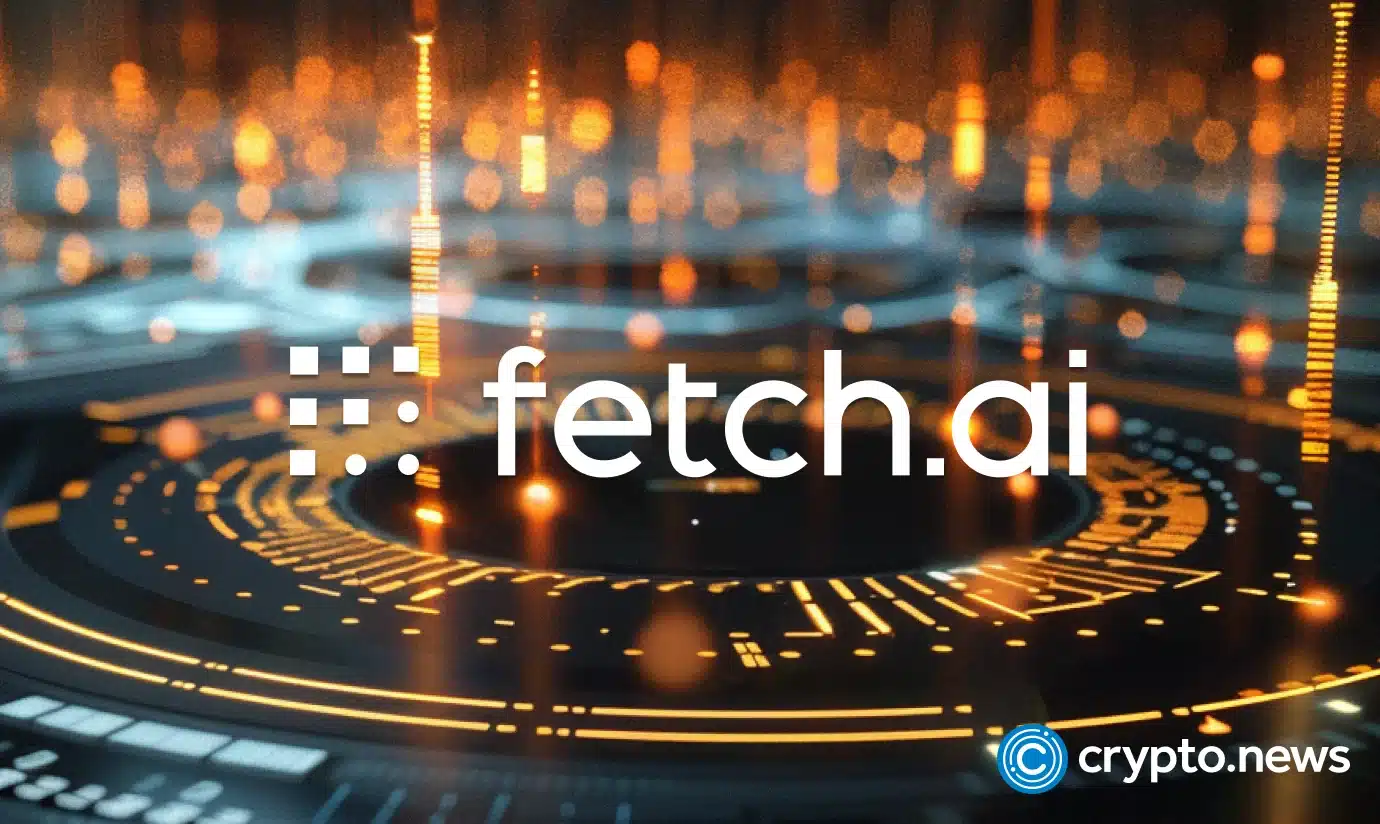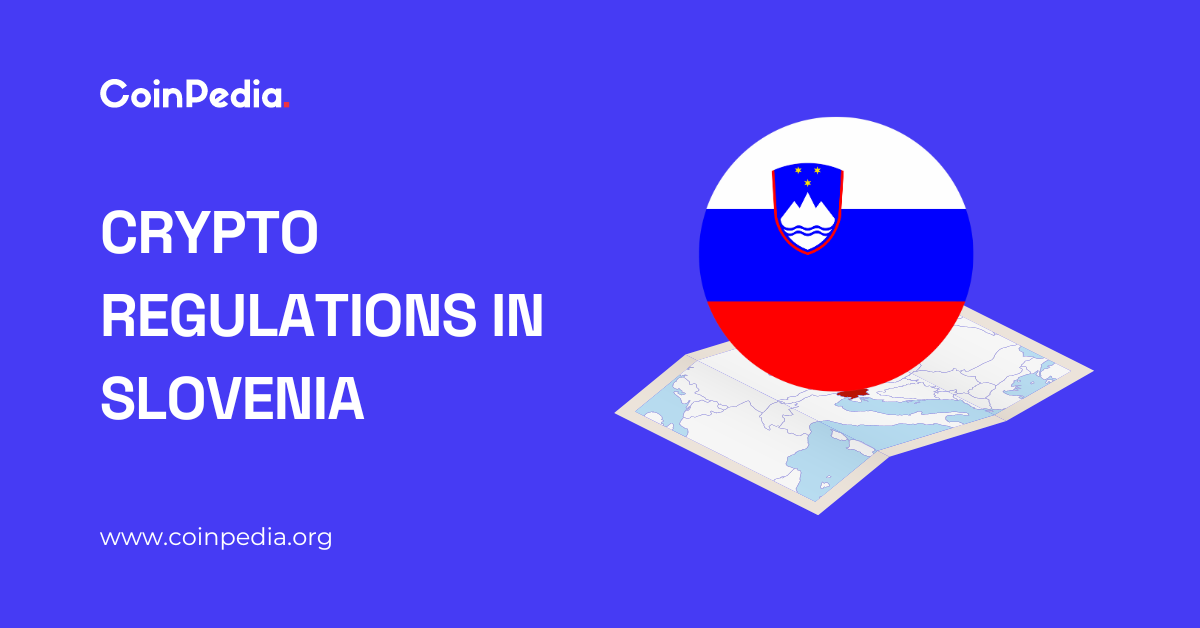Regulation
Qu’est-ce que Fetch.ai (FET) ? Guide sur l’histoire, les utilisations et les tendances futures

Intéressé par l’historique du projet Fetch.ai et à quoi sert Fetch.ai ? Cet article détaillera le fonctionnement de fetch.ai, l’historique du projet et comment acheter le jeton.
Qu’est-ce que Fetch.ai ?
Récupérer.ai (FET) est un projet qui met à la disposition de ses utilisateurs des services d’IA personnalisés. En un mot, Fetch.ai fournit des services qui permettent aux utilisateurs d’automatiser les processus dans de nombreux secteurs et, idéalement, de réduire ainsi leurs frais généraux.
Le projet se présente comme un écosystème autonome « machine à machine » qui permet aux programmes d’IA, appelés agents, d’exécuter diverses fonctions.
Les cas d’utilisation potentiels incluent :
- Améliorer l’efficacité des transactions pour les clients des services financiers
- Permettre aux villes intelligentes d’améliorer les services aux résidents
- Éliminer les intermédiaires inutiles dans la gig economy en optimisant le recrutement
Fetch.ai vise à automatiser les processus dans des secteurs tels que le suivi de la chaîne d’approvisionnement, l’énergie, la finance, le Web3, les transports et bien d’autres.
Histoire et évolution : qui a créé Fetch.ai ?
Fetch.ai a été fondée en 2017 par Thomas Hain, Toby Simpson et Humayun Sheikh. Outlier Ventures a financé et soutenu Fetch.ai. Le projet a également lancé une offre d’échange initiale (IEO) sur Binance qui a permis de récolter 6 millions de dollars en seulement 10 secondes.
L’équipe Fetch.ai a déployé le réseau principal début 2020. L’équipe a sécurisé partenariats avec Bosch pour introduire des systèmes de données d’automatisation et d’IA pour les applications industrielles et également avec Datarella pour tester l’infrastructure de la ville intelligente à Munich, en Allemagne.
Comment fonctionne Fetch.ai ?
Fetch.ai comporte plusieurs éléments différents : voici comment tout cela fonctionne.
Agents IA qui exercent des fonctions et prennent des décisions sur la plateforme
L’Agentverse est une plateforme SaaS (Software-as-a-Service) sur laquelle les agents sont peaufinés.
Le moteur IA est une interface qui ajoute une touche humaine en recevant des instructions et des requêtes.
Le réseau de récupération rassemble toutes ces couches dans une seule interface.
Les transactions Fetch.ai sont vérifiées par lui-même version de la blockchain Preuve d’enjeu. Les jetons FET sont nécessaires en tant qu’agents d’IA qui s’exécutent sur le réseau et pour former ces agents. Ils effectuent également des transactions pour des contrats intelligents, des oracles de réseau et des transactions.
Les agents réseau utilisent l’apprentissage automatique pour s’adapter aux médias et aux circonstances en temps réel, ce que les partisans de l’état Fetch.ai contribuent à améliorer l’efficacité du réseau.
Prenons comme exemple le partenariat de Munich. Dans ce projet de ville intelligente, Fetch.ai pourrait surveiller le flux de trafic et suggérer des améliorations qui réduiraient les embouteillages.
Elle pourrait potentiellement mettre en pratique ces améliorations de sa propre initiative en contrôlant les feux de circulation sur la base de données en temps réel.
D’autres exemples incluent le fait de veiller à ce que l’énergie soit utilisée efficacement.
Comment acheter Fetch.ai : méthodes et portefeuilles
Les jetons FET se négocient sur plusieurs bourses cryptographiques différentes.
1. Enregistrez un compte d’échange
Pour commencer, créez un compte sur l’une des bourses suivantes où les jetons FET sont échangés.
Possibilités :
Entrez votre adresse e-mail et suivez les instructions pour créer votre compte. Habituellement, vous devrez également passer les contrôles de vérification Know Your Customer (KYC). Celles-ci dépendent de l’échange, mais vous aurez besoin d’une pièce d’identité avec photo et d’autres informations telles qu’un justificatif de votre adresse.
2. Achetez ou déposez des cryptomonnaies
Pour le moment, vous ne pouvez pas acheter de FET directement avec une monnaie fiduciaire comme l’USD ou l’EUR.
Ce que vous pouvez faire, c’est déposer de l’argent par virement bancaire et échanger ces fonds contre de la crypto, ou simplement déposer de la crypto directement sur votre portefeuille d’échange.
Voici un guide sur l’achat de crypto si vous ne savez pas par où commencer.
3. Achetez Fetch.ai (FET)
Pour acheter du FET, vous devrez échanger votre crypto-monnaie contre du FET. Sur Binance, vous pouvez échanger du FET contre du BNB, de l’USDT, de l’USDC et du BTC, et ces trois derniers cryptos sont également des options de trading FET courantes pour d’autres bourses.
Accédez au menu de trading au comptant de votre bourse et entrez le montant de FET que vous souhaitez acheter.
Si vous passez un ordre au marché, l’ordre sera exécuté instantanément à la valeur marchande. Si vous passez un ordre limité en sélectionnant le prix exact auquel vous souhaitez négocier, votre ordre entrera dans une file d’attente et sera exécuté si la demande est là.
Les ordres limités nécessitent un peu plus de savoir-faire, de temps et de contribution de votre part, et le compromis est que les frais que vous payez sont réduits.
5 : Stockez votre fetch.ai (FET) dans un portefeuille
Vous pouvez stocker FET dans un portefeuille logiciel ou matériel.
Les portefeuilles matériels comme Ledger Nano S ou Trezor conservent vos fonds hors ligne sur un périphérique matériel. Le stockage hors ligne, ou stockage froid, est généralement le moyen le plus sécurisé de stocker des crypto-monnaies.
D’un autre côté, les portefeuilles logiciels comme MetaMask ou TrustWallet sont considérés comme plus pratiques et accessibles. Avec les portefeuilles logiciels, il est particulièrement important de protéger vos informations privées, telles que les clés privées, en ne stockant pas ces informations en ligne.
Paysage réglementaire pour Fetch.ai
Il est toujours utile de connaître la situation réglementaire d’une crypto-monnaie que vous achetez ou surveillez, y compris Fetch.ai. Les réglementations peuvent changer dans différentes régions du monde, ce qui peut avoir un impact sur la légalité du trading de crypto. Le prix peut également être affecté par les décisions réglementaires.
Fetch.ai est un projet intéressant en termes de réglementation car il fonctionne comme une crypto-monnaie et un projet d’IA, tous deux soumis à des réglementations ou à de potentielles réglementations futures.
États-Unis
Aux États-Unis, la réglementation de la cryptographie est gérée par la Securities and Exchange Commission (SEC) et la Commodity Futures Trading Commission (CFTC).
La SEC est l’organisme qui détermine si un actif, y compris les crypto-monnaies, est considéré comme un titre. Les titres sont fortement réglementés et ne peuvent être achetés et vendus qu’avec une licence. FET n’a pas été classé comme titre et n’est donc soumis à aucune restriction en matière de valeurs mobilières.
Les bourses qui vendent des jetons FET doivent toutefois se conformer à la législation américaine AML et KYC.
L’IA n’est actuellement pas réglementée de manière spécifique aux États-Unis, mais cela pourrait changer à l’avenir à mesure que les outils et les entreprises d’IA deviennent plus répandus.
Union européenne
La cryptographie est réglementée dans l’UE par des organismes nationaux individuels. Cependant, l’UE introduit la réglementation sur les marchés de crypto-actifs (MiCA), qui vise à fournir un cadre unifié avec lequel les pays de l’UE peuvent réglementer la cryptographie. La MiCA devrait entrer en vigueur en juin 2024.
Rien n’indique que MiCA aura un impact négatif sur le fonctionnement ou la disponibilité des jetons Fetch.ai et FET pour le moment. L’UE a également adopté la loi européenne sur l’intelligence artificielle qui traite de la réglementation de l’IA en mars 2024. L’impact que cette réglementation pourrait avoir sur des projets comme Fetch.ai reste à voir.
Asie
Représentant une partie importante de la population mondiale, l’Asie dispose de diverses lois concernant les crypto-monnaies. Le Japon et la Corée du Sud ont des réglementations strictes et étendues en matière de cryptographie en matière de lutte contre le blanchiment d’argent et de vérification KYC. La Chine a entièrement interdit le commerce et l’extraction de crypto-monnaies, ce qui signifie que le cas d’utilisation de Fetch.ai y est très limité car les jetons FET ne peuvent pas être vendus. La Chine travaille également à l’introduction d’une réglementation sur l’IA.
À Singapour, l’IA est réglementée par le Model AI Governance Framework 2019, qui vise à garantir que les systèmes d’IA sont centrés sur l’humain et que les décisions prises par les modèles d’IA sont équitables et transparentes. Des réglementations comme celle-ci sont en cours de discussion dans de nombreuses régions du monde et il est possible qu’elles aient un impact sur la manière dont le réseau Fetch.ai est autorisé à fonctionner.
Perspectives d’avenir pour Fetch.ai
Fetch.ai est un projet prometteur à bien des égards, même s’il pourrait être confronté à des obstacles réglementaires en fonction de la manière dont les réglementations sur l’IA pourraient être mises en œuvre dans un avenir proche.
Avancées technologiques et intégrations
En plus de collaborer avec Bosch et Datarella, Fetch.ai s’est aligné sur Deutsche Telekom via la Fondation Fetch.ai. Les partenariats avec des entreprises réputées en dehors de l’espace cryptographique sont souvent considérés comme un signal d’alarme indiquant qu’un projet a un cas d’utilisation dans divers secteurs.
Fetch.ai dispose désormais de plusieurs réseaux blockchain différents grâce à l’intégration du protocole de communication inter-blockchain par le réseau Cosmos. Par exemple, il existe désormais des protocoles DeFi sur différents réseaux pouvant prendre en charge la technologie Fetch.ai. Cet effort visant à rendre les projets compatibles les uns avec les autres dans l’espace blockchain s’appelle interopérabilité.
Les projets qui semblent ne pas se limiter à un seul réseau sont souvent considérés comme ayant un avantage sur la concurrence.
Une récente mise à niveau de Fetch.ai a également permis d’exécuter des contrats intelligents utilisant le langage de programmation Rust sur le réseau, ce qui signifie que des applications plus avancées peuvent désormais être créées sur Fetch.ai.
Historique des prix de Fetch.ai et performances du marché
Le prix du FET, la crypto-monnaie Fetch.ai, a récemment atteint de nouveaux sommets historiques, coïncidant avec une augmentation globale de l’intérêt pour les projets d’IA dans le monde entier.
Le FET a commencé à se négocier en juin 2019 à environ 0,21 $ et sa valeur a considérablement augmenté. Le prix est resté relativement inactif tout au long de la période 2019-2023 avant d’exploser en valeur cette année. Le prix du FET a bondi de plus de 400 % entre février et mars 2024, pour atteindre 3,20 $. Il se négocie désormais à 2,49 $.
Le potentiel de Fetch.ai
Avec des partenariats sérieux à son actif et un cas d’utilisation prometteur dans de nombreux domaines, Fetch.ai est solidement positionné pour se tailler une part du marché des solutions et services d’IA. À mesure que la demande de plates-formes d’IA augmente, Fetch.ai pourrait devenir un acteur dominant, même si cette demande accrue entraînera une concurrence accrue de la part d’autres projets.
Fetch.ai est vulnérable à toutes les faiblesses technologiques potentielles qu’il pourrait avoir, ainsi qu’à une réglementation défavorable dans le secteur de la crypto-monnaie ou de l’IA.
Les personnes qui suivent le projet feraient bien de surveiller le climat réglementaire ainsi que la concurrence potentielle que Fetch.ai continue de croître en tant que marché des solutions d’IA et de la technologie blockchain.
FAQ
À qui appartient Fetch.ai ?
Toby Simpson, Humayun Sheikh et Thomas Hain sont les fondateurs de Fetch.ai. Fetch.ai Limited est enregistrée dans le Cambridgeshire au Royaume-Uni. Un organisme distinct, la Fondation Fetch.ai, est impliqué dans le développement et la gouvernance du projet.
Fetch.ai est-il sécurisé ?
Fetch.ai a été audité par la société d’audit blockchain Certik, qui a attribué une note de 91 sur 100 au projet. Les projets qui ne disposent pas d’un tel audit ne peuvent pas être considérés comme sécurisés. Bien que l’audit de Certik soit un excellent signe pour le projet Fetch.ai, les projets audités peuvent être et sont effectivement la proie d’erreurs humaines et de failles de sécurité.
Qu’est-ce qui rend Fetch.ai unique ?
Fetch.ai est unique dans son approche du déploiement d’agents autonomes basés sur l’IA sur un réseau blockchain afin d’améliorer les opérations de diverses industries. Alors que d’autres projets utilisent également l’IA et l’apprentissage automatique ainsi que la technologie blockchain, l’écosystème Fetch.ai est unique dans sa configuration à 4 couches.
Combien y a-t-il de pièces fetch.ai
Fetch.ai (FET) dispose d’une offre en circulation d’environ 848 193 896 FET. L’offre maximale de jetons FET est plafonnée à 1,15 milliard.
Regulation
Crypto community gets involved in anti-government protests in Nigeria

Amid the #EndBadGovernanceInNigeria protests in Nigeria, a notable shift is occurring within the country’s cryptocurrency sector. As the general public demands sweeping governance reforms, crypto community leaders are seizing the opportunity to advocate for specific regulatory changes.
Rume Ophi, former secretary of the Blockchain Stakeholders Association of Nigeria (SiBAN), stressed the critical need to integrate crypto-focused demands into the broader agenda of the protests.
Ophi explained the dual benefit of such requirements, noting that proper regulation can spur substantial economic growth by attracting investors and creating job opportunities. Ophi noted, “Including calls for favorable crypto regulations is not just about the crypto community; it’s about leveraging these technologies to foster broader economic prosperity.”
Existing government efforts
In opposition to Ophi’s call for action, Chimezie Chuta, chair of the National Blockchain Policy Steering Committee, presents a different view. He pointed out The Nigerian government continued efforts to nurture the blockchain and cryptocurrency industries.
According to Chuta, the creation of a steering committee was essential to effectively address the needs of the crypto community.
Chuta also highlighted the creation of a subcommittee to harmonize regulations for virtual asset service providers (VASPs). With the aim of streamlining operations and providing clear regulatory direction, the initiative involves cooperation with major organizations including the Securities and Exchange Commission (SEC) and the Central Bank of Nigeria (CBN). “Our efforts should mitigate the need for protest as substantial progress is being made to address the needs of the crypto industry,” Chuta said.
A united call for support
The ongoing dialogue between the crypto community and government agencies reflects a complex landscape of negotiations and demands for progress.
While actors like Ophi are calling for more direct action and the inclusion of crypto demands in protest agendas, government figures like Chuta are advocating for recognition of the steps already taken.
As protests continue, the crypto community’s push for regulatory reform highlights a crucial aspect of Nigeria’s broader fight to improve governance and economic policies. Both sides agree that favorable regulations are critical to the successful adoption and implementation of blockchain technologies, signaling a potentially transformative era for Nigeria’s economic framework.
Read also : OKX Exchange Exits Nigerian Market Amid Regulatory Crackdown
Regulation
Cryptocurrency Regulations in Slovenia 2024

Slovenia, a small but highly developed European country with a population of 2.1 million, boasts a rich industrial history that has contributed greatly to its strong economy. As the most economically developed Slavic nation, Slovenia has grown steadily since adopting the euro in 2007. Its openness to innovation has been a key factor in its success in the industrial sector, making it a prime destination for cryptocurrency enthusiasts. Many believe that Slovenia is poised to become a powerful fintech hub in Europe. But does its current regulatory framework for cryptocurrencies support such aspirations?
Let’s explore Slovenia’s cryptocurrency regulations and see if they can propel the country to the forefront of the cryptocurrency landscape. My expectations are positive. What are yours? Before we answer, let’s dig a little deeper.
1. Cryptocurrency regulation in Slovenia: an overview
Slovenia is renowned for its innovation-friendly stance, providing a supportive environment for emerging technologies such as blockchain and cryptocurrencies. Under the Payment Services and Systems Act, cryptocurrencies are classified as virtual assets rather than financial or monetary instruments.
The regulation of the cryptocurrency sector in Slovenia is decentralized. Different authorities manage different aspects of the ecosystem. For example, the Bank of Slovenia and the Securities Market Agency oversee cryptocurrency transactions to ensure compliance with financial laws, including anti-money laundering (AML) and terrorist financing regulations. The Slovenian Act on the Prevention of Money Laundering and Terrorist Financing (ZPPDFT-2) incorporates the EU’s 5th Anti-Money Laundering Directive (5MLD) and aligns with the latest FATF recommendations. All virtual currency service providers must register with the Office of the Republic of Slovenia.
2. Cryptocurrency regulation in Slovenia: what’s new?
Several notable developments have taken place this year in the cryptocurrency sector in Slovenia:
July 25, 2024:Slovenia has issued a €30 million on-chain digital sovereign bond, the first of its kind in the EU, with a yield of 3.65%, maturing on 25 November 2024.
May 14, 2024:NiceHash has announced the first Slovenian Bitcoin-focused conference, NiceHashX, scheduled for November 8-9 in Maribor.
3. Explanation of the tax framework for cryptocurrencies in Slovenia
The Slovenian cryptocurrency tax framework provides clear guidelines for individuals and businesses. According to the Slovenian Financial Administration, the tax treatment depends on the status of the trader and the nature of the transaction.
- People:Income earned from cryptocurrencies through employment or ongoing business activities is subject to personal income tax. However, capital gains from transactions or market fluctuations are exempt from tax.
- Companies:Capital gains from cryptocurrency-related activities are subject to a 19% corporate tax. Value-added tax (VAT) generally applies at a rate of 22%, although cryptocurrency transactions that are considered as means of payment are exempt from VAT. Companies are not allowed to limit payment methods to cryptocurrencies alone. Tokens issued during ICOs must follow standard accounting rules and corporate tax law.
4. Cryptocurrency Mining in Slovenia: What You Need to Know
Cryptocurrency mining is not restricted in Slovenia, but income from mining is considered business income and is therefore taxable. This includes rewards from validating transactions and any additional income from mining operations. Both individuals and legal entities must comply with Slovenian tax regulations.
5. Timeline of the development of cryptocurrency regulation in Slovenia
Here is a timeline highlighting the evolution of cryptocurrency regulations in Slovenia:
- 2013:The Slovenian Financial Administration has issued guidelines stating that income from cryptocurrency transactions should be taxed.
- 2017:The Slovenian Financial Administration has provided more detailed guidelines on cryptocurrency taxation, depending on factors such as the status of the trader and the type of transaction.
- 2023:The EU adopted the Markets in Crypto-Assets (MiCA) Regulation, establishing a uniform regulatory framework for crypto-assets, their issuers and service providers across the EU.
Endnote
Slovenia’s approach to the cryptocurrency sector is commendable, reflecting its optimistic view of the future of cryptocurrencies. The country’s balanced regulatory framework supports cryptocurrency innovation while protecting users’ rights and preventing illegal activities. Recent developments demonstrate Slovenia’s commitment to continually improving its regulatory environment. Slovenia’s cryptocurrency regulatory framework sets a positive example for other nations navigating the evolving cryptocurrency landscape.
Read also : Hong Kong Cryptocurrency Regulations 2024
Regulation
A Blank Sheet for Cryptocurrencies: Kamala Harris’ Regulatory Opportunity

photo by Shubham Dhage on Unsplash
As the cryptocurrency landscape continues to evolve, the need for clear regulation has never been more pressing.
With Vice President Kamala Harris now leading the charge on digital asset regulation in the United States, this represents a unique opportunity to start fresh. This fresh start can foster innovation and protect consumers. It can also pave the way for widespread adoption across industries, including real estate agencies, healthcare providers, and online gaming platforms like these. online casinos ukAccording to experts at SafestCasinoSites, these platforms come with benefits such as bonus offers, a wide selection of games, and various payment methods. Ultimately, all this increase in adoption could propel the cryptocurrency market forward.
With this in mind, let’s look at the current state of cryptocurrency regulation in the United States, a complex and confusing landscape. Multiple agencies, including the Securities and Exchange Commission (SEC), the Commodity Futures Trading Commission (CFTC), and the Financial Crimes Enforcement Network (FinCEN), have overlapping jurisdictions, creating a fragmented regulatory environment. This lack of clarity has stifled innovation as companies are reluctant to invest in the United States, fearing regulatory repercussions. A coherent and clear regulatory framework is urgently needed to realize the full potential of cryptocurrencies in the United States.
While the US struggles to find its footing, other countries, such as Singapore and the UK, are actively looking into the cryptocurrency sector by adopting clear and supportive regulatory frameworks. This has led to a brain drain, with companies choosing to locate in more conducive environments.
Vice President Kamala Harris has a unique opportunity to change that narrative and start over. Regulation of cryptocurrencies. By taking a comprehensive and inclusive approach, it can help create a framework that balances consumer protection with innovation and growth. The time has come for clear and effective regulation of cryptocurrencies in the United States.
Effective regulation of digital assets is essential to foster a safe and innovative environment. The key principles guiding this regulation are clarity, innovation, global cooperation, consumer protection, and flexibility. Clear definitions and guidelines eliminate ambiguity while encouraging experimentation and development to ensure progress. Collaboration with international partners establishes consistent standards, preventing regulatory arbitrage. Strong safeguards protect consumers from fraud and market abuse, and adaptability allows for evolution in response to emerging trends and technologies, striking a balance between innovation and protection.
The benefits of effective cryptocurrency regulation are multiple and far-reaching. By establishing clear guidelines, governments can attract investors and mainstream users, driving growth and adoption. This can, in turn, position countries like the United States as global leaders in fintech and innovation. Strong safeguards will also increase consumer confidence in digital assets and related products, increasing economic activity.
A thriving crypto industry can contribute significantly to GDP and job creation, which has a positive impact on the overall economy. Furthermore, effective regulation has paved the way for the growth of many businesses such as tech startups, online casinos, and pharmaceutical companies, demonstrating that clear guidelines can open up new opportunities without stifling innovation. This is a great example of how regulation can allay fears of regressive policies, even if Kamala Harris does not repeal the current progressive approach. By adopting effective regulation, governments can create fertile ground for the crypto industry to thrive, thereby promoting progress and prosperity.
Regulation
South Korea Imposes New ‘Monitoring’ Fees on Cryptocurrency Exchanges

Big news! The latest regulatory changes in South Korea are expected to impact major cryptocurrency exchanges like Upbit and Bithumb. Under the updated regulations, these platforms will now have to pay monitoring fees, which could cause problems for some exchanges.
Overview of new fees
In the latest move to regulate cryptocurrencies, the Financial Services Commission announced on July 1 the revised “Enforcement Order of the Act on the Establishment of the Financial Services Commission, etc.” update “Regulations on the collection of contributions from financial institutions, etc.” According to local legislation newsThe regulations require virtual asset operators to pay supervisory fees for inspections conducted by the Financial Supervisory Service starting next year. The total fees for the four major exchanges are estimated at around 300 million won, or about $220,000.
Apportionment of costs
Upbit, which holds a dominant market share, is expected to bear more than 90% of the total fee, or about 272 million won ($199,592) based on its operating revenue. Bithumb will pay about 21.14 million won ($155,157), while Coinone and GOPAX will contribute about 6.03 million won ($4,422) and 830,000 won ($608), respectively. Korbit is excluded from this fee due to its lower operating revenue.
Impact on the industry
The supervision fee will function similarly to a quasi-tax for financial institutions subject to inspections by the Financial Supervisory Service. The new law requires any company with a turnover of 3 billion won or more to pay the fee.
In the past, fees for electronic financial companies and P2P investment firms were phased in over three years. However, the taxation of virtual asset operators has been accelerated, reflecting the rapid growth of the cryptocurrency market and increasing regulatory scrutiny.
Industry reactions
The rapid introduction of the fee was unexpected by some industry players, who had expected a delay. Financial Supervisory Service officials justified the decision by citing the creation of the body concerned and the costs already incurred.
While larger exchanges like Upbit and Bithumb can afford the cost, smaller exchanges like Coinone and GOPAX, which are currently operating at a loss, could face an additional financial burden. This is part of a broader trend of declining trading volumes for South Korean exchanges, which have seen a 30% drop since the new law went into effect.
-

 Regulation7 months ago
Regulation7 months agoRipple CTO and Cardano founder clash over XRP’s regulatory challenges ⋆ ZyCrypto
-

 Regulation5 months ago
Regulation5 months agoNancy Pelosi Considers Supporting Republican Crypto Bill FIT21 – London Business News
-

 Videos6 months ago
Videos6 months agoCryptocurrency News: Bitcoin, ETH ETF, AI Crypto Rally, AKT, TON & MORE!!
-

 Regulation6 months ago
Regulation6 months agoBitcoin’s future is ‘bleak’ and ripe for regulation, says lead developer
-

 News6 months ago
News6 months agoThe trader earned $46 million with PEPE after reaching a new ATH
-

 Blockchain6 months ago
Blockchain6 months agoSolana ranks the fastest blockchain in the world, surpassing Ethereum, Polygon ⋆ ZyCrypto
-

 Blockchain6 months ago
Blockchain6 months agoSolana Surpasses Ethereum and Polygon as the Fastest Blockchain ⋆ ZyCrypto
-

 Regulation6 months ago
Regulation6 months ago🔒 Crypto needs regulation to thrive: Tyler Cowen
-

 Videos6 months ago
Videos6 months agoWho Really CONTROLS THE MARKETS!! Her plans REVEALED!!
-

 Videos7 months ago
Videos7 months agoKucoin safe?? Exchange REVIEW and beginner’s guide!!
-

 Blockchain6 months ago
Blockchain6 months ago“Liquid vesting” is an oxymoronic feature of blockchain that allows early investors to sell without waiting
-

 Videos6 months ago
Videos6 months agoInstitutions purchasing MEMECOINS?! Everything you need to know!





